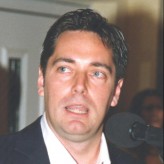 After the very successful 1st Workshop on Earthquake Archaeology and Paleoseismology held in the ancient roman site of Baelo Claudia (Spain, 2009), the INQUA Focus Group on Paleoseismology and Active Tectonics decided to elaborate a bi-annual calendar to support this joint initiative with the IGCP-567 “Earthquake Archaeology”. This second joint meeting moved to the eastern Mediterranean, a tectonically active setting within the Africa-Eurasia collision zone and located in the origins of the pioneer’s works on archaeoseismology. However, for the coming year 2012, at least a part of us will move also to the New World, where the 3rd INQUA-IGCP 567 international workshop will take place in Morelia, Mexico in November 2012. It is planned to proceed with the meeting, so we are thinking of Aachen, Germany, to be the host in 2013, possibly together with Louvain, Belgium.
After the very successful 1st Workshop on Earthquake Archaeology and Paleoseismology held in the ancient roman site of Baelo Claudia (Spain, 2009), the INQUA Focus Group on Paleoseismology and Active Tectonics decided to elaborate a bi-annual calendar to support this joint initiative with the IGCP-567 “Earthquake Archaeology”. This second joint meeting moved to the eastern Mediterranean, a tectonically active setting within the Africa-Eurasia collision zone and located in the origins of the pioneer’s works on archaeoseismology. However, for the coming year 2012, at least a part of us will move also to the New World, where the 3rd INQUA-IGCP 567 international workshop will take place in Morelia, Mexico in November 2012. It is planned to proceed with the meeting, so we are thinking of Aachen, Germany, to be the host in 2013, possibly together with Louvain, Belgium.
The aim of this joint meeting is to stimulate the already emerging comparative discussion among Earthquake Environmental Effects (EEE) and Earthquake Archaeoseismological Effects (EAE) in order to elaborate comprehensive classifications for future cataloguing and parametrization of ancient earthquakes and palaeoearthquakes. One of the final goals our collaborative workshops is the integration of archaeoseismological data in Macroseismic Scales such as the Environmental Seismic Intensity Scale ESI-2007 developed within the frame of the International Union for Quaternary Research (INQUA). In this second workshop we offer again a multidisciplinary and cross-disciplinary approach and program, since there is an urgent necessity to share the knowledge and objectives among geologists, seismologists, geodesists, archaeologists and civil engineers in order to improve seismic hazard assessments and analyses in a near future. Also, we intend to sharpen geoscientists and their research more in the direction of critical facilities, which are of world-wide public and political interest after the dramatic catastroph in Fukushima, Japan.
The last two years provided significant dreadful earthquake scenarios, which were in most of the cases oversized in relation to the data provided by the historical and instrumental seismicity. The Haiti Mw 7.0 (Haiti, Jan 2010), Malua Mw 8.8 (Chile, May 2010), Christchurch Mw 6.3 (New Zealand, Feb 2011), Tohoku Mw 9.0 (Japan, Mar 2011) and Lorca Mw 5.1 (Spain, May 2011) events illustrates that both extreme subduction earthquakes or moderate events can generate severe damage in relation to relevant secondary coseismic effects or Earthquake Environmental Effects (EEE). Most of these recent events have clearly demonstrated that the vibratory ground shaking is not the unique, or even most significant, source of direct damage, and it is by no means the only parameter that should be considered in seismic hazard assessments. The lessons offered by the aforementioned events corroborate once again the relevance of liquefaction, tsunamis, rockfalls, landslides, ground subsidence, uplift or failure as a major source of hazard. But this also underpins the need of re-evaluating the significance of macroseismic intensity as an empirical measurement of earthquake size. In fact, as highlighted in the last volume produced by the INQUA Focus Area (Serva et al., 2011), intensity is a parameter able to describe a complete earthquake scenario, based on direct field observation and suitable to be preserved in the geological, geomorphological and archaeological records.
With this aim the INQUA TERPRO #0418 Project (2008-2011) has implemented a world-wide online EEE Catalogue based on Google Earth in order to promote the use of the ESI-2007 Scale for seismic hazard purposes www.eeecatalog.sinanet.apat.it/terremoti/index.php. On the other hand the IGCP-567 is promoting an interesting shared approach of EEE data and EAE data for the same purpose. Examples of this variety of original research coming from this collaborative approach are the Geological Society of London Special Volume 316 (2009) Paleoseismology: Historical and Prehistorical records of Earthquake Ground Effects for Seismic Hazard Assessment (K. Reicherter, A.M. Michetti & P.G. Silva, Eds.), the Geological Society of America Special Papers 471, Ancient Earthquakes (2010) (M. Sintubin, I.S. Stewart, T. Niemi & E. Altunel, Eds.) and the Special Volume of Quaternary International (2011) Earthquake Archaeology and Paleoseismology (P.G. Silva, M. Sintubin & K. Reicherter, Eds.). In the same way, this abstract volume contains more than 80 contributions from researchers of more than 27 different countries and illustrates the upgrading shared knowledge on palaeo-, ancient, historical and instrumental earthquakes and images an impressive growth of our community. Our workshop was co-ordinated through the newly established website www.paleoseismicity.org, where earthquake info and blogs are openly shared.
Finally, we wish all participants a fruitful conference and workshop in the vicinity of the ancient sites of the Classical Greece around the Corinth Gulf, where earthquake science, wonderful landscapes, ancient cultures, amazing sunny days, fantastic “Greek cooking”, nice beaches, daily cool beers, wine tasting events and late night gin tonics mixed with hot discussions are waiting for all of us. A special “efharisto poli” goes to Christoph Grützner and Raul Pérez-López for their invaluable work with the organisation and the abstract handling.
The Organizers of the 2nd INQUA-IGCP 567 Workshop
Dr. Ioannis Papanikolaou
Agricultural University of Athens (GRE)
Aon-Benfield Hazard Research Centre, University College London, (UCL) (UK)
Prof. Klaus Reicherter
RWTH Aachen University (GER)
Prof. Andreas Vött
University of Mainz (GER)
Prof. Pablo G. Silva
University of Salamanca (ESP)



No Comments
No comments yet.